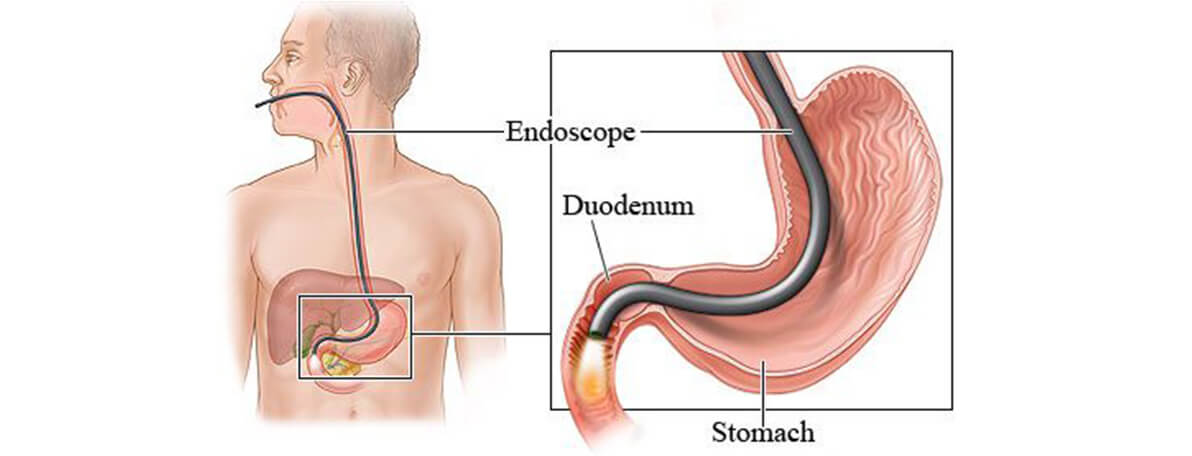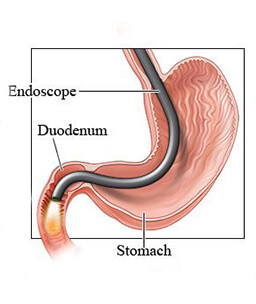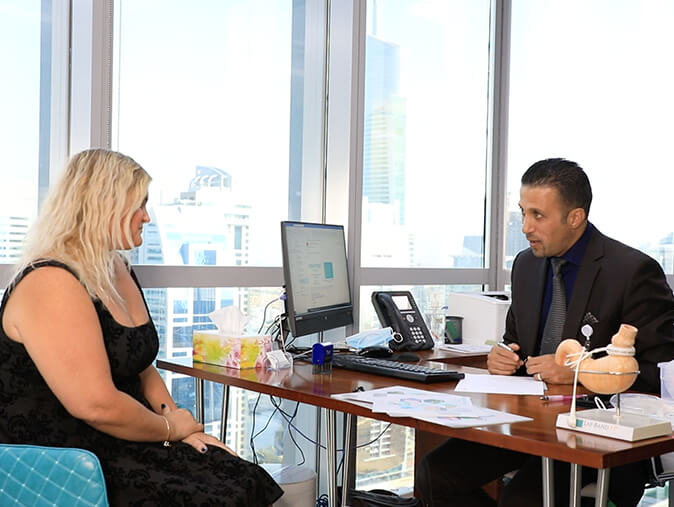What Is an Upper Endoscopy?
Upper endoscopy, also known as esophagogastroduodenoscopy (EGD), is a significant procedure that assists medical professionals in diagnosing and treating conditions related to the upper part of the digestive system, including the esophagus, stomach, and beginning of the small intestine.
Understanding Upper Endoscopy
Upper endoscopy is a crucial medical procedure that employs a thin, flexible tube, called an endoscope, with a light and camera at the end. The endoscope is gently guided down the patient's throat to allow physicians to visualize and evaluate the upper digestive system. The procedure helps diagnose conditions like acid reflux, gastritis, and certain types of cancer, among others.


How Upper Endoscopy Works
The endoscope, once placed into the digestive tract, transmits high-resolution images onto a screen. This enables the physician to carefully examine the lining of the upper digestive tract. If necessary, they can also use the endoscope to collect small tissue samples (biopsies) or conduct minor treatments.

Advantages of Upper Endoscopy
-
- Highly Diagnostic: Upper endoscopy offers a comprehensive view of the upper digestive tract, which can facilitate the detection of a range of disorders.
-
- Minimally Invasive: The procedure involves a flexible tube inserted through the mouth, thus avoiding any surgical cuts.
-
- Therapeutic Potential: Besides diagnosing, upper endoscopy allows for minor interventions like removing polyps or treating bleeding ulcers.
-
- Short Procedure Time: Typically, an upper endoscopy takes about 15 to 30 minutes, making it a relatively swift diagnostic procedure.
-
- Comfortable Recovery: Sedation is used during the procedure to enhance patient comfort, and recovery is generally rapid and straightforward.
Getting Ready for an Upper Endoscopy
Despite its many advantages, upper endoscopy isn't suitable for everyone. Several conditions must be fulfilled before a patient can undergo this procedure:
-
- Health Assessment: A thorough evaluation of the patient's overall health, including a review of their medical history and current medications, is necessary.
-
- Symptoms or Risk Factors: Upper endoscopy is typically recommended when symptoms like abdominal pain, nausea, vomiting, difficulty swallowing, or gastrointestinal bleeding are present or when the patient has certain risk factors for diseases such as stomach cancer.
-
- Informed Consent: As with any medical procedure, it is vital that the patient fully understand the process, benefits, and potential risks involved and provide their informed consent.
Upper endoscopy is a valuable tool for diagnosing and treating a variety of upper gastrointestinal disorders. To find out if this procedure could be right for you, seek professional medical advice. Always remember to gather sufficient information, weigh the pros and cons, and take an active role in your health decisions.
Understanding the Benefits of an Upper Endoscopy
Preliminary Insights
Upper endoscopy, often known as EGD, is a diagnostic process permitting a direct inspection of the upper gastrointestinal tract. This procedure enables a thorough examination of your esophagus, stomach, and the initial part of the small intestine, the duodenum. This assists in diagnosing health conditions, such as stomach ulcers, tumors, celiac disease, and others, presenting a crucial role in gastrointestinal health management.
Diagnostic Capability
Upper endoscopy aids in evaluating numerous digestive symptoms, like nausea, persistent heartburn, abdominal pain, and unexplained weight loss. By offering direct visualization of the gastrointestinal tract's upper section, this procedure can spot abnormalities like:
-
- Inflammations or infections
-
- Blockages or strictures
-
- Growths, like polyps or tumors
-
- Ulcers
The tool used in endoscopy, the endoscope, can also obtain tissue samples (biopsies) for further lab examinations.
Therapeutic Applications
Besides being a potent diagnostic tool, upper endoscopy can perform therapeutic tasks. For example, it can:
-
- Remove polyps or other unusual growths
-
- Stop bleeding from ulcers or other lesions
-
- Stretch narrowed areas of the esophagus, known as strictures
-
- Extract foreign bodies lodged in the esophagus or stomach
This dual utility enhances patient care and often eliminates the need for separate diagnostic and therapeutic procedures.
Safety Parameters of Upper Endoscopy
Upper endoscopy is generally regarded as a safe procedure with a low risk of complications. Compared to surgical interventions, it is less invasive, with shorter recovery periods. Some possible but infrequent side effects include throat discomfort, mild bloating, or, seldom, serious complications like bleeding or perforation.
Procedure Enhancement
Upper endoscopy positively influences the diagnosis and management of gastrointestinal disorders. It makes detection of abnormalities simpler and provides an avenue for immediate therapeutic interventions. Its precise visual analysis significantly improves clinical decision-making and patient care.
Psychological Benefits
Lastly, Upper Endoscopy plays a crucial role in providing patients with peace of mind. Knowing their health condition through a conclusive diagnosis can reduce stress, anxiety, and uncertainty. Prompt and accurate detection of any abnormality can result in early treatment, often leading to better prognoses and enhancing overall life quality.
An Overview of the Procedure
An Upper Endoscopy typically lasts between 15 to 30 minutes. Performed under sedation, a long, thin tube with a light and camera, called an endoscope, is passed through your mouth into your upper gastrointestinal tract. This lets the doctor inspect and potentially treat abnormalities. Upon procedure completion, the endoscope is carefully withdrawn, and recovery from sedation begins. The simplicity of the operation, combined with its powerful diagnostic and therapeutic capabilities, underscores the significance of upper endoscopy in modern healthcare.
Before The Procedure
Preparing for an upper endoscopy starts days before the actual procedure. Once your healthcare provider has determined that you're a good candidate for the procedure, you'll be given a list of steps to take to get ready for it.
Firstly, you'll need to adjust your medication intake, if necessary. Certain medications can interfere with the procedure or its results, so you'll need to discuss this with your healthcare provider.
Also, it's absolutely critical to have an empty stomach during the upper endoscopy, so you'll be asked to fast for at least eight hours before the procedure.
After The Procedure
Observation and Initial Healing Stage
Post-upper endoscopy, patients are typically observed in a recovery room for a short period of time. During this observation phase, your vital signs are monitored, any discomfort is managed, and the immediate after-effects of the procedure are evaluated.
The healing of your throat, which may be sore due to the endoscope, is also monitored. Over-the-counter lozenges or a warm saltwater gargle may be recommended for any minor throat discomfort.
Suggestions for Dietary Modifications
After an upper endoscopy, you should take it easy on your stomach for a while. This might mean drinking clear liquids alone at first, then moving on to softer meals, and ultimately eating normally again.
There will be a strong focus on mild, easily digestible foods as instructed by your doctor throughout your rehabilitation. To avoid any inconvenience or issues, it is essential to adhere to the following instructions.
Procedure Guidelines
Resting for a brief time after an upper endoscopy and then getting back to your regular routine is also part of the recovery process. For the first few hours following the surgery, it is recommended that you take it easy to enable your body to recover from the sedative effects.
This will begin with light, impact-free motions like walking and proceed to your healthcare provider-approved level of intensity.
Strengthening Emotional Health
Although an upper endoscopy is a medical treatment, it may have profound psychological effects if it reveals a serious diagnosis. Patients need to be comforted emotionally while they digest test findings and make decisions about the next steps in care.
Patients are recommended to seek mental health treatment, such as counseling or therapy, in the event that they experience emotional discomfort or anxiety as a consequence of the surgery or its outcomes.
Knowing What to Expect and How to Proceed
Upper endoscopy, sometimes called EGD (esophagogastroduodenoscopy), is a non-invasive diagnostic and therapeutic technique for evaluating the esophagus, stomach, and duodenum. However, like with any kind of medical treatment, there is always the chance of unwanted side effects. Here are some things you may encounter post-procedure:
Potential Post-Procedure Concerns
-
Bleeding and infection: These are normal concerns associated with any procedure involving incision or invasion. Although not common, they need careful supervision.
-
Adverse reaction to sedation: Sedatives used during the procedure may cause unforeseen reactions in some patients.
-
Tissue damage: Though rare, there's a chance that the upper GI tract could be damaged during the procedure.
-
Aspiration: Inhalation of stomach contents into the lungs can occur but is usually preventable with correct procedure preparation.
Specific Risks Related to Upper Endoscopy
-
Perforation or tearing: The instrument used in an endoscopy could accidentally puncture the lining of the upper GI tract.
-
Over-sedation: There's a risk of complications from being overly sedated.
-
Esophageal stricture: This is a narrowing of the esophagus, which could lead to swallowing difficulties.
-
Adverse reactions to biopsy: If a biopsy is taken, it could lead to internal bleeding or infection.
Non-reversibility of Biopsy Results
Keep in mind that once a biopsy is taken during an upper endoscopy, the results cannot be reversed or changed. Therefore, it is vital to have a comprehensive discussion with your healthcare provider about what to expect from this procedure.
Importance of Post-Procedure Care
After the procedure, proper care and follow-ups are crucial to ensure your well-being. Scheduled check-ups serve to:
Guarantee Improvement and Well-being
-
Track your recovery: Regular follow-ups to assess healing and recovery.
-
Address complications: Swift identification and management of any arising issues.
-
Adjust treatment plan, if needed: Altering the approach based on your recovery and health status.
-
- Offer advice and support: Helping you cope with any changes after the procedure.
Adherence to Prescribed Medications
Following an upper endoscopy, especially if a biopsy is taken, adherence to prescribed medications such as pain management or antibiotics is crucial. This might include:
-
- Regular intake of prescribed medication: Ensuring you take your medicines as instructed.
-
- Avoiding certain medications: Some medications might worsen your condition or slow down healing.
-
- Recognizing medication side effects: Being aware of potential side effects of your prescribed medicines and reporting them to your healthcare provider.
Post-Endoscopy Nutrition
Nutrition is an essential part of recovery after an upper endoscopy. Keeping hydrated and eating a diet high in fiber may help. It's also important to avoid certain foods that might irritate the GI tract.
A well-rounded diet post-upper endoscopy aids your recovery, and certain supplements may be needed based on your procedure's findings.
The pros and cons of an upper endoscopy help you know what to expect. With the right post-procedure care, a good diet, and medication compliance, you can make the most of this procedure and ensure a smooth healing process.
Always speak to a healthcare provider about whether an upper endoscopy is suitable for your specific needs.
Frequently Asked Questions
-
What's an upper endoscopy?
We use it to examine your upper digestive tract with a small camera-equipped tube.
-
Why would you recommend one?
This helps us diagnose conditions when you have symptoms like heartburn, unexplained weight loss, or other digestive troubles.
-
Does it hurt?
Not usually. We'll use a sedative and local anesthetic for your comfort.
-
Is any special diet needed after?
Typically, you can follow your normal diet unless we suggest otherwise based on our findings or a biopsy.
-
How should I prepare?
We'll give you instructions. Usually, you need to fast and might have to pause certain medications.
-
What happens during the procedure?
We gently insert the endoscope and examine your upper digestive tract using the images it sends to our screen.
-
Can you go home right after the procedure?
Absolutely, but since we use sedatives during the procedure, you'll need someone else to drive you home. You might also feel a bit drowsy or have a slightly sore throat for a few hours afterwards.
-
Are there risks?
Yes, but they're rare. Potential risks include reactions to sedatives, bleeding, or tearing, and we'll discuss these with you.
-
When will you receive the results of your upper endoscopy?
We'll usually discuss our initial findings with you right after the procedure. However, if we took biopsies, it might take a few days to a week to get those results back.
-
What's the difference between an upper endoscopy and a colonoscopy?
Both are types of endoscopy, but they examine different parts of your digestive tract. An upper endoscopy allows us to look at the esophagus, stomach, and beginning of the small intestine, while a colonoscopy lets us examine your colon or large intestine.
BOOK Now
Make An Appointment
-

80026763
Contact Dr. Samir if you have any questions
-

Visit
02 Jumeirah Beach Rd - opposite Burj Al Arab - Umm Suqeim - Jumeirah 3 - Dubai
Opening Hours:
9am-9pm (Saturday- Thursday)
9am-6pm (Saturday)





